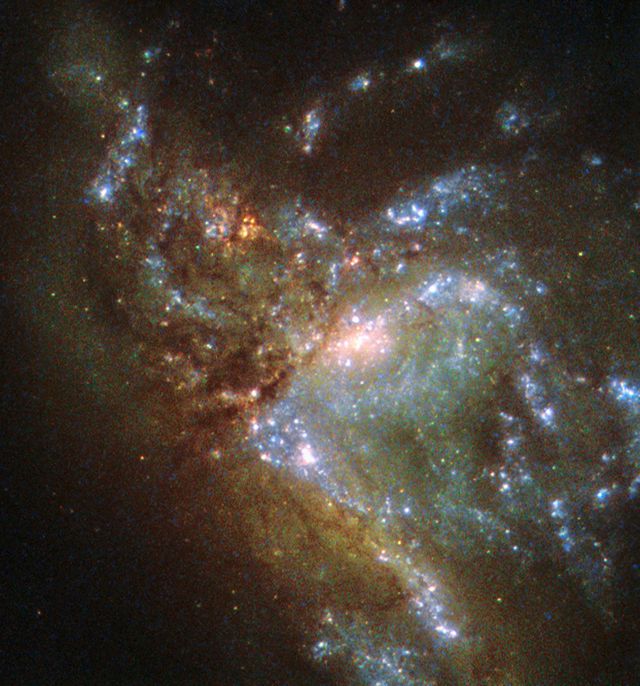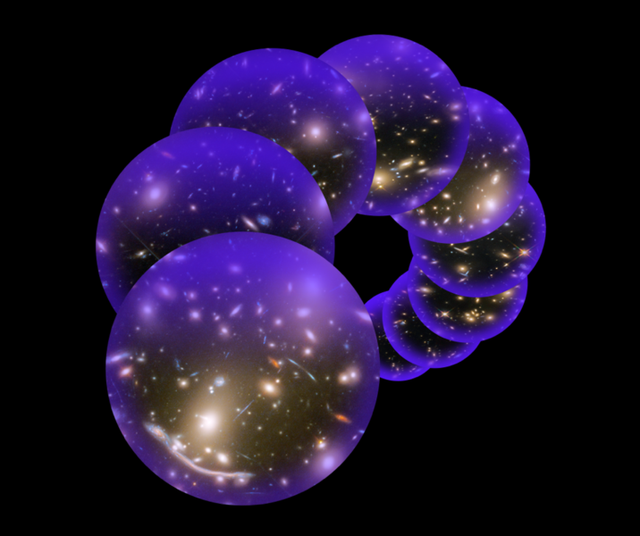How does one study the formation of a galaxy? Or the formation of the oldest thing known to exist, the universe? There are many ways, including powerful telescopes both on land and in space. But Peter Behroozi, an assistant professor at the University of Arizona Steward Observatory, and his team, came up with a different method: generating millions of different universes on a supercomputer.
Examining all the generated universes together, Behroozi's team hoped, would show the likelihood of different physical theories of universal and galactic formation. The team wanted to specifically focus on the role that mysterious dark matter plays in galaxy formation, as well as how galaxies evolve over time and how they give birth to stars.
"On the computer, we can create many different universes and compare them to the actual one, and that lets us infer which rules lead to the one we see," said Behroozi, the study's lead author, in a press statement.
The virtual universes, each known as an "Ex Machina," feature a system that would put any open-world video game to shame. They contain 12 million galaxies and start 400 million years after the Big Bang, evolving all to the present day.
The tests challenged commonly held ideas on the formation of galaxies.
"As we go back earlier and earlier in the universe, we would expect the dark matter to be denser, and therefore the gas to be getting hotter and hotter," Behroozi said. "This is bad for star formation, so we had thought that many galaxies in the early universe should have stopped forming stars a long time ago. But we found the opposite: galaxies of a given size were more likely to form stars at a higher rate, contrary to the expectation."
Using current theories of galaxy formation, the team's supercomputer produced galaxies that are "redder" than current ones. That means the supercomputer had to keep churning out stars for much longer than expected.
Red, in this instance, refers to the electromagnetic radiation given off by stars. When any object, stars included, has an increase in wavelength, its red electromagnetic radiation increases. This wavelength increase, known as a redshift, is associated on a stellar level with age. The older a star, the more it redshifts.
If a galaxy has stopped producing new stars, which give off blue electromagnetic radiation, it will eventually only be left with be left with older, redder stars.
"But we don't see that," Behroozi said. "If galaxies behaved as we thought and stopped forming stars earlier, our actual universe would be colored all wrong. In other words, we are forced to conclude that galaxies formed stars more efficiently in the early times than we thought. And what this tells us is that the energy created by supermassive black holes and exploding stars is less efficient at stifling star formation than our theories predicted."
The computing power for the project was immense. "All computers on Earth combined could not do this in a hundred years. So to just simulate a single galaxy, let alone 12 million, we had to do this differently," Behroozi said. That required international collaboration, from NASA Ames Research Center to the Leibniz-Rechenzentrum in Garching, Germany.
"We took the past 20 years of astronomical observations and compared them to the millions of mock universes we generated," Behroozi explained. "We pieced together thousands of pieces of information to see which ones matched. Did the universe we created look right? If not, we'd go back and make modifications, and check again."
Source: Arizona
David Grossman is a staff writer for PopularMechanics.com. He's previously written for The Verge, Rolling Stone, The New Republic and several other publications. He's based out of Brooklyn.















